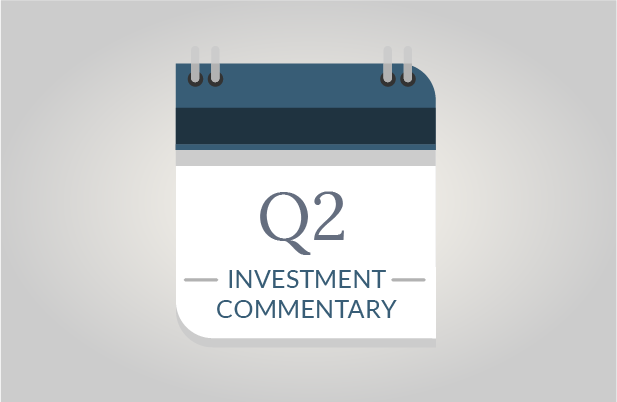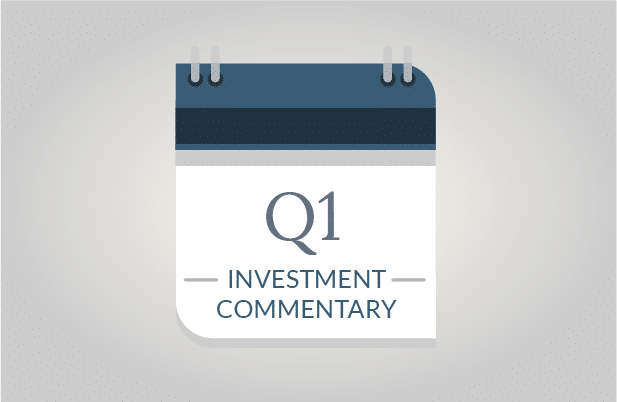SageVest Wealth Management recently released our quarterly commentary for the second quarter of 2017. Highlights are as follows:
– The first half of the year marks one of the strongest upturns in stocks in recent history.
– Several market drivers are supporting returns, giving rise to optimism looking forward.
– Central bank actions are one notable cautionary point on the horizon, with little historical reference for consideration or predictions.
Continued market momentum throughout the first and second quarters of the year produced the strongest first half-year market rally since 2009. Returns were robust here domestically, and to a greater degree abroad, bringing a welcome resurgence to international stock markets. In fact, all but four of the world’s thirty largest stock markets ranked by market value climbed higher during the first half of the year. That’s certainly something to celebrate!
The 100th Month of A Bull Market
Barring any unforeseen events, July 9, 2017 will mark yet another celebration: the 100th month mark since the start of an extended bull market rally that began March 9, 2009. Investors have enjoyed a long period of investment prosperity. This market rally might not be the strongest in history (in fact, it’s been fairly weak), but it has rewarded investors who have been willing to participate and assume some level of risk, versus sitting on the sidelines in cash.
As we look to history, the markets tell us that investors are rewarded over time, and that there are far more years of positive returns on the history books than there are down years. That said, history also tells us that no bull market lasts forever. As we celebrate the 100-month point, we also acknowledge questions about how much longer this bull market can run.
What’s Driving The Bull Market?
Realistically, there’s no precise answer to this question, nor one regarding how long it will sustain. That said, there are a number of driving forces supporting the markets, ideally suggesting that the current market euphoria is firmly standing on a strong legged stool.
Growing Corporate Earnings: Price-to-earnings ratios are a bit lofty, but were recently supported by a jump in earnings, which increased by 14% among S&P 500 companies during the first quarter. That marks the best showing in earnings since 2011.
Modest Inflation: Recent updates report that inflation is tracking in the “sweet spot” for the stock markets, at right around, or just below 2%. If inflation stays at bay, the markets could be ripe for continued expansion.
A Healthy Economy: U.S. GDP growth is projected to be accelerating, perhaps north of 2% in 2017; and, our national unemployment rate remains low. Both are indicators of a healthy and a growing economy.
Business Friendly Politics: While the political arena might not be friendly, it is generally business-friendly under the current administration, with a positive business outlook even if politics grind into a stalemate gridlock.
Ample Liquidity: Liquidity (money availability) has been, and remains, a driving force to the markets. Central banks around the world remain incredibly accommodative, with historically low central bank rates.
What Are The Greatest Market Risks?
With all of this good news, you might ask, what’s there to worry about? At the risk of sounding trite, there’s simply always something to worry about when it comes to investing. Sometimes market risks can be predicted, and sometimes not.
Interestingly, the most frequent question we’ve received in recent months is how might political instability impact the markets? What we counsel is that the markets are oftentimes fairly blasé to political events. We’ve repeatedly seen this through elections, debt ceiling limits, government shutdowns, the Brexit vote, recent political strife, and even during military actions. That’s not to say that politics have no impact. They can, but they’re typically not a driving market force.
The economy, the outlook for growth, market prices, inflation and liquidity are the prime drivers. We’re generally ranking well on each of these factors, perhaps with modest question marks surrounding market prices and liquidity.
Stock prices relative to earnings are slightly above historical averages. This gives pause, but in our eyes, doesn’t sound any alarm bells, as we’re still far from the lofty levels characteristic of prior market declines.
Liquidity also remains ample, but with foreseen changes on the horizon as the Federal Reserve Board (Fed) and other leading central banks are evaluating shifts in their monetary policies. Technically, cash balances in the markets remain high, but it’s hard to compete with the bloated balance sheets that the Fed and other central banks hold after unprecedented central bank stimulus efforts.
The Great Unknown of Unwinding Central Bank Stimulus
A primary catalyst for the current bull market was an aggressive stance by the Fed. The upswing that ensued was nurtured not only by an effective zero percent interest rate environment (supporting the flow and access of capital to borrowers), but by massive government bond purchases. These efforts drove interest rates to all-time historical lows, including bouts of negative interest rates, and helped to propel both the economy and the investment markets.
The return of a healthy economy here domestically prompted the Fed to finally raise its target lending rate late last year, with three subsequent rate increases since then. Likewise, the European Central Bank is evaluating a shift in stimulus actions, given improving economic conditions throughout the EU.
Rate increases are the traditional action that central banks take to thwart inflation. While this is a common practice, the appropriate pace and magnitude of rate increases has been a longstanding challenge. The markets have proven that there’s a delicate balance between combatting inflation and unintentionally triggering an economic decline.
While raising lending rates is no easy feat, the challenges that central banks face today are far more complicated due to the eventual need to unwind trillions of dollars of bonds owned on central bank balance sheets. Domestically, the Fed purchased $4.5 trillion of government bonds, assuming roughly 10% of our total US bond market on its books. The magnitude of these purchases made the Fed a market mover when it purchased bonds, forcing liquidity into the markets and driving down interest rates. Now, as the Fed contemplates an unwinding of its balance sheet, it stands to become a market mover again – this time in the reverse direction.
Fortunately, long-term interest rates have remained fairly low, given a tepid outlook for inflation. However, it’s unknown how a contraction in liquidity might impact the markets – both the bond and the stock markets.
Looking Ahead
We remain generally optimistic, given a number of healthy indicators both here and abroad, but maintain a watchful eye on central bank actions, which could have unintended consequences. We continue to advise investors to identify and follow an investment approach that allows you to enjoy the rewards of a potential extended bull market while also protecting you against an inevitable downturn somewhere on the horizon.
As always, we encourage you to contact us with any questions.




